——— I ———
I – (1) The symbol for current. (2) The abbreviation for integrated loudness.
IAA – abbreviation for Inter App Audio .
IABM – an organization formerly known as thee International Association of Broadcasting Manufacturers, now known as the International Association for Broadcast & Media Technology Suppliers.
IAC – Inter Application Communication. A Mac driver that provides a means of linking timing and other information between two different programs running on the same computer, most commonly used to link MIDI sequencers with audio recording software.
IACC – InterAural Cross Correlation.
IBM – International Business Machines.
iBiquity Digital Corporation – a company based in Columbia, Maryland, created by the merger of USA Digital Radio and Lucent Digital Radio, to develop and promote the HD radio system in the US and around the world.
IBOC – In-Band On-Channel digital radio. See HD radio.
IBP – In Between Phase.
IC – Integrated Circuit.
ICA – Ideal Cardioid Arrangement. See INA-5.
ID3 tag – metadata used with the MP3 audio file format that allows for the inclusion of data, such as title, artist, album, track number, and other information, that is stored within the file, but is not part of the audio data. There are two different and unrelated versions of ID3 tags: ID3v1 and ID3v2.
IDC – Insulation Displacement Connector. A type of connector that can be assembled without soldering or crimping. The wire is simply inserted into the connector using a special insertion tool. It provides for an easier and faster assembly.
IDE – Integrated Drive Electronics. See hard disk drive interface.
ideal cardioid arrangement – see INA-5.
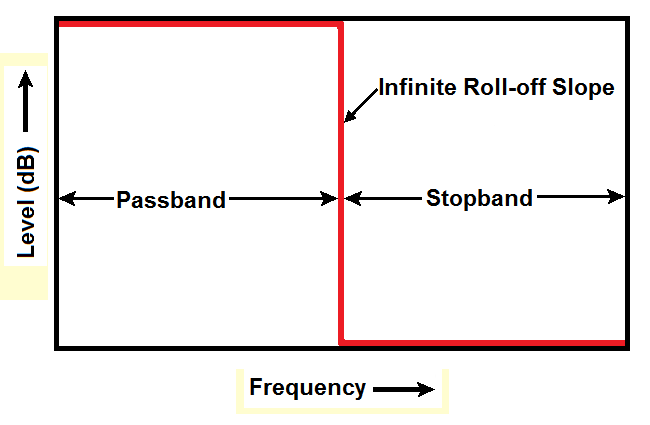
ideal filter – the characteristics that a filter designer tries to achieve in a “perfect” filter. An “ideal” filter should pass all signals in the pass band, completely attenuate all signals in the stop band, have an abrupt transition between the two bands, and have uniform sensitivity to all frequencies. Obviously, such a filter does not exist in the real world.
idiophone – a classifications for musical instruments in which a resonant solid material made of wood, metal, or stone vibrates to produce the initial sound according to the Hornbostel-Sachs system of musical instrument classification. The eight basic types in this classification are concussion, friction, percussion, plucked, scraped, shaken, stamped, and stamping. The other four classifications are electrophone, membranophone, chordophone, and aerophone
IEC – International Electrotechnical Commission. An international standards organization that prepares and publishes international standards for all electrical, electronic, and related technologies, what they term “electrotechnology.”
IEC 60958 – the International Electrotechnical Commission standard for digital audio interfaces. See AES3.
IEC connector – a type of ac power connector as specified by the IEC, that provides for international use by means of power cords specific to particular countries. Also called an international power connector.
IEC characteristic – see IEC curve.
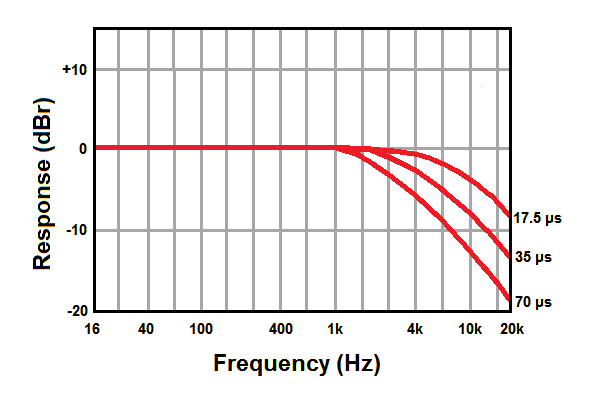
IEC curve – a standard set of equalization curve for use with tape machines at various tape speeds, developed by the IEC. In about 1948, Ampex designed an equalization curve for use with the standard professional recording tape at the time (3M's 111 recording tape). It was similar to equalization curves used by several other manufacturers of tape machines. In 1953, the Ampex equalization curve was adopted as a standard by NARTB (which became the NAB in 1958). Tape equalization curves were originally developed to reduce hiss and to compensate for the fact that magnetic tape did not have a linear response and tended to saturate at higher frequencies. The NAB equalization curve reduced high frequencies and boosted lows (in order to reduce the level of hum) during recording and did the reverse during playback (pre-emphasis and de-emphasis). These boosts and rolloffs were made with a slope of 6 dB/octave. As tape formulations improved, the NAB curve became less of a match for the new formulations, which did not saturate as easily, although hiss remained a problem. Then in the 1960s CCIR developed a new curve that worked better with the new formulations, but it omitted the low frequency pre-emphasis. The CCIR curve was defined for professional machines with tape speeds of 7.5 ips and higher. The CCIR curve became the standard in Europe for professional use, whereas the NAB curve remained the standard in the US for professional use, as well as everywhere for amateur use. The German standards organization DIN also adopted these standards with a few minor differences. Later CCIR merged with the ITU, and eventually became the ITU-R. The IEC assumed the responsibility for the equalization curve. Originally, NAB had no standard for 30 ips until much later. Today the IEC curve (also called IEC characteristic or IEC equalization) and the NAB curve (also called NAB equalization) are designated as IEC1 and IEC2, respectively. These standards are now part of AES-1971. A comparison of NAB and IEC equalization curves is shown in the table below:
| Tape Speed (ips) |
IEC1 Low fc/High fc μs(Hz)/μs(Hz) |
IEC2/NAB Low fc/High fc μs(Hz)/μs(Hz) |
|---|---|---|
| 30 | None/35(4547) | None/17.5(9095) |
| 15 | None/35(4547) | 3183(50)/50(3183) |
| 7.5 | None/70(2274) | 3183(50)/50(3183) |
| 3.75 | Undefined* | 3183(50)/90(1768) |
| 1.875 | Undefined* | 3183(50)/120(1326) |
| *Note: Since the IEC equalization is undefined below 7.5 ips, the NAB curve is normally used. | ||
IECEE – IEC System for Conformity Testing and Certification of Electrotechnical Equipment and Components or IEC System of Conformity Assessment Schemes for Electrotechnical Equipment and Components. A group within the IEC that sets standards for the certification of electrical and electronic products. The system is better known as the CB System, a multilateral agreement that provides for international certification of these products, allowing a single certification for worldwide market access. It began as the European Commission for Conformity Testing of Electrical Equipment (CEE) which merged into the IEC in 1985. CEE also established and published various standards for electrical equipment, most of which have been superseded by IEC standards.
IEC equalization – see IEC curve.
IEEE – The Institute of Electrical and Electronics Engineers.
IEEE 802.1 – the working group of the IEEE concerned with the architecture of LANs, MANs, and wide area networks.
IEEE 802.11 – see 802.11.
IEEE 1394 – the original IEEE specification created in 1995 for connecting computer devices, transmitting up to 400 Mb/s. It goes by several trade names, including FireWire (Apple), iLink (Sony), and Lynx (Texas instruments).
IEEE 1394a – an updated IEEE specification providing for a number of enhancements for the original IEEE 1394, including transmission speeds of up to 800 Mb/s.
IEEE 1394b – the IEEE specification created in 2002 for FireWire 800.
IEM – In-Ear Monitors.
IF – Intermediate Frequency.
IFB – Interrupted FoldBack.
IFPI – International Federation Phonographique Industrie. An international organization of companies and industry associations involved with recorded music. Based in London, its focus is on promoting recorded music and safeguarding the rights of record producers worldwide.
IHF – Institute of High Fidelity.
IHFM – Institute of High Fidelity Manufacturers. See Institute of High Fidelity.
IID – Interaural Intensity Difference. See interaural level difference.
IIR filter – Infinite Impulse Response filter.
IL – Insertion Loss.
ILD – Interaural Level Difference.
iLink – see IEEE 1394.

iLok – a copy protection scheme developed and manufactured by PACE Anti-Piracy, Inc. that uses a USB dongle and an online registration process, that allows licensed users of various applications and plug-ins to use the software on different computers without the need to acquire separate authorization for each computer.
IM – InterModulation.
IMA – International MIDI Association.
image – see stereo image.
image frequency – in a wireless receiver, a frequency other than the desired radio frequency carrier that, if allowed to enter a receiver and mix with the local oscillator, will produce a cross-product frequency equal to the intermediate frequency (IF). If such frequencies are not filtered out before they get into the system, they can result in poor performance and intermittent interference.
image rejection – see image rejection ratio.
image rejection ratio (IRR) – the measure of the ability of a receiver to reject image frequency signals, expressed as a ratio of the signal level of the intermediate frequency (IF) to the signal level of the image frequency in decibels (dB). Also called image frequency rejection ratio or simply image rejection.
image frequency rejection ratio – see image rejection ratio.
image resolution – see resolution, definition #3.
image shift – a change in the position of an instrument or voice in a stereo image or an instrument or voice placed in the wrong location in the image. Also called a stereo image shift.
imaging – see stereo imaging.
Imation – a technology company based in Oakdale, Minnesota. It was founded in 1996, when 3M spun off its data storage business. Its products include magnetic tape, optical products, data backup systems, and audio and video products.
IMD – Intermodulation Distortion.
IMF – Interoperable Master Format.
immersive audio – see immersive sound.
immersive sound – a type of 3-D sound that produces sound from all directions, including the front, back, sides, above, and below the listener. Immersive sound was originally developed for movie theaters, but was later adapted for music. Currently, there are several competing, but incompatible, technologies providing immersive sound: Auro-3D, Dolby Atmos, DTS:X, Sony 360 Reality Audio, Apple Spatial Audio, 22.2, MPEG-H, and others. Unlike traditional surround sound, immersive does not use discrete audio channels, but uses algorithms that send the sound in a particular direction, based on the speaker configuration. Sometimes called immersive audio. See also 24.1.10.
impedance (Z) – the effective resistance of an electric circuit or component to alternating current, arising from the combination of resistance and reactance.
impedance balanced output – see balanced output.
impedance matching – optimizing the output impedance of a device with the input impedance of the device it is feeding. Optimum does not alway mean that the impedance of the two devices are equal. In fact, the input impedance is usually much greater than the output impedance. Improper impedance matching can affect the sensitivity, frequency response, power transfer, and other parameters of the device. Examples when impedance matching is important are matching loudspeakers with power amplifiers and microphones with preamps. See also bridging.
impedance-matching transformer – a device used to connect cables and equipment with different impedances, which increases the transfer efficiency and maintains the high-frequency response in the signal.
imperfect time – see common time.
imperial units – see US customary units.
import – to bring audio files or MIDI files into a DAW session. Imported files can be created in another application, captured from another device, or taken from another DAW session. See also export.
impulse noise – a type of transient noise, such as surface noise (clicks and pops on a record) or poor synchronization in digital recordings.
impulse response (IR) – (1) A sound or signal such as a starter gun or snare drum hit that is recorded in an actual acoustic space and analyzed to create an algorithm used in a convolution reverb. (2) The reaction of a dynamic system in response to some external change. The impulse response describes the behavior or reaction of the system as a function usually of time, but sometimes of some other independent variable.
IM rejection – the ability of a receiver to reject the products of intermodulation (IM).
iMSO – independent Music Store Owners.
INA-3 – a surround sound microphone technique developed by Günther Theile. INA is an acronym for Ideale Nieren Anordnung, German for “ideal cardioid arrangement.” The INA-3 is a technique for the three front channels only, and most commonly is used with the surround channel array of the INA-5. A cardioid microphone is used for the center channel placed 17.5 cm (7 in) in front of two cardioids for left and right channels, pointing outwards. The spacing between the left and right microphones is 35 cm (14 in). Distances between the front three microphones can be changed to adjust the ambient response.
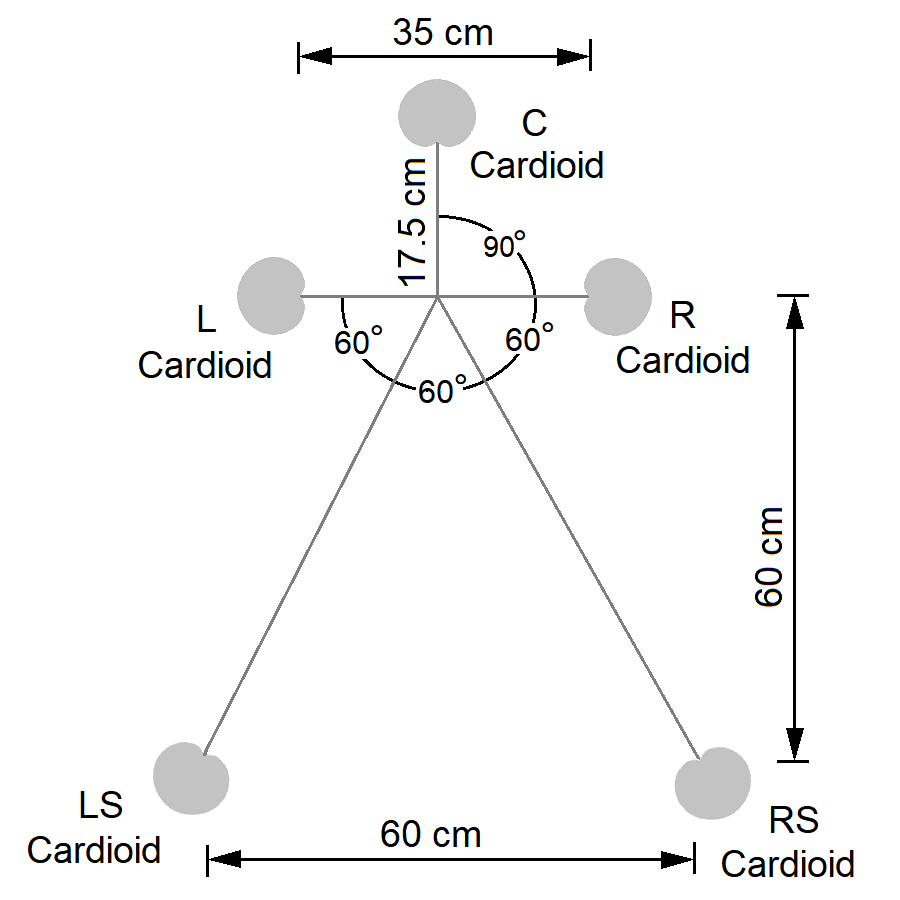
(Ideal Cardioid Arrangement
INA-5 – a surround sound microphone technique, an extension of the three-channel INA-3 system developed by Günther Theile. INA is an acronym for Ideale Nieren Anordnung, German for “ideal cardioid arrangement.” The INA-5 uses five cardioid microphones. The center microphone is placed 17.5 cm (7 in) in front of two cardioids for left and right channels, pointing outwards. The spacing between the left and right microphones is 35 cm (14 in). Two additional rear cardioid mics are placed about 60 cm (24 inches) behind the front line, and 60 cm (24 in) apart, with an angle of 150° from the center mic. Distances between the front three microphones can be changed to adjust the ambient response. Also called ideal cardioid arrangement (ICA).
in and out – a slang term for a method of miking a kick drum, in which one microphone is placed inside the drum to capture more of the attack of the beater and a second microphone is place outside the drum to capture more of the boom sound. The two signals are mixed to achieve the desired kick drum sound.
inaudible – (1) Not loud enough to be heard. (2) Below the threshold of hearing.
in between phase (IBP) – a circuit or plug-in designed to correct phase problems that occur when combining out-of-phase or partially out-of-phase audio signals, especially those that sometimes occur in amplifiers at very low frequencies.
incentive auction – the reallocation by the FCC (as directed by the US Congress) of the portion of the UHF frequency spectrum previously used by TV stations to be used by broadband wireless devices, such as smart phones. By way of auction, the FCC offered broadcasters an opportunity to voluntarily give up spectrum in return for a share of the auction proceeds, hence the term incentive auction. This reallocation also affects wireless microphones operating in this band. Sometimes called the 600 MHz auction because the frequencies being auctioned begin at 698 MHz (the upper end of the UHF TV band) and go down from there.
Incentive Auction Resource Center – a website maintained by Shure that tracks the changes affecting wireless microphones caused by the FCC incentive auction.
inch – a unit of linear measure equal to 1⁄12 of a foot in the US customary units or approximately 2.54 cm. Tape speeds on tape recorders are normally measured in inches per second (in/sec or ips).
incidence angle – see angle of incidence.
incident sound – see direct sound.
incident wave – see direct sound.
incoherent – two complex waveforms that are partially or completely out-of-phase most of the time.
increment – (1) To increase the settings on a device, especially by a small amount. (2) An increase in the settings of a parameter. Opposite of decrement. Compare with boost.
independent Music Store Owners (iMSO) – an organization formed to support, encourage, educate, and inspire the owners of independent music stores.
individual out – an output from a mixer, keyboard, drum machine, or audio interface that carries a separate signal from the stereo mix output, which allows for separate processing from the main stereo mix.
inductance (L) – the property of an electric conductor or circuit that causes a voltage to be generated by a change in the flow of current. The standard unit of inductance is the henry (H). More common units are the millihenry (1 mH = 10‑3 H) and the microhenry (1 μH =10‑6 H).
induction – the process by which an electrical conductor becomes electrified when near a charged body, by which a magnetizable body becomes magnetized when in a magnetic field, or by which a voltage is produced by a varying magnetic field. Induction is one the ways that stray interference occurs in audio signals. Also called electromagnetic induction.
inductive collapse – see flyback voltage.
inductive spike – see flyback voltage.
inductor (L) – passive electronic component that stores energy in the form of a magnetic field. In its simplest form, an inductor consists of a wire loop or coil, and the inductance depends on the number of turns in the coil, the radius of the coil, and the type of material around which the coil is wound. See also choke.
inductive coupling – when two conductors are configured in such a way that change in current flow through one wire induces a voltage across the ends of the other wire by means of electromagnetic induction. Also called magnetic coupling. See also dc coupling and capacitive coupling.

in-ear monitors (IEM) – a set of earphones used by musicians and audio engineers for on-stage and recording studio purposes instead of the usual floor monitors. Also called a
personal monitor (PM).
in ears – slang for in-ear monitors.
inertance – the opposition to the flow of acoustic energy through a sound barrier, analogous to the resistance in an electric circuit. Since a dense, highly reflective barrier exhibits high inertance, the term is not necessarily related to the absorption coefficient or sabine ratings of the surface or insulating materials.
infinite baffle – a loudspeaker enclosure design in which the sound emanating from the rear of the speaker cone is completely isolated from sound emanating from the front, to eliminate the interaction of the two sounds.
infinite impulse response (IIR) filter – a digital filter that has an impulse response that never quite reaches exactly zero, but continues indefinitely. It looks back in time at a theoretical infinite number of previous samples to generate a result. However, there is no need for calculations to continue to infinity because the value levels off near zero and can be neglected past a certain point. This is in contrast to a finite impulse response (FIR) filter where a fixed number of past samples are analyzed and the impulse response become exactly zero at some finite time. IIR filters produce an output with ringing following a transient, similar to many analog filters, making it ideal for emulating analog filter designs. An FIR filter is computationally intensive and introduces considerably more latency than an IIR filter. For a minimum-phase filter, an IIR design works well, but for a linear-phase filter, an FIR design is most commonly used.
infinite repeat – setting the feedback control on a delay processor so that echo effect will continue indefinitely.
InfoComm International – see AVIXA.
information technology (IT) – (1) Anything related to computer technology, including hardware, software, storage, networking, the internet, and the infrastructure and processes used to create, process, store, secure, and exchange all forms of electronic data. Before 1990, recording were not very involved with IT. However, today IT has become an integral part of the process. (2) People or departments that work with computer technologies.
Information Technology Association of America (ITAA), – see TechAmerica.
infrasonic – a sound with a frequency below 20 Hz, the lower limit of normal human hearing. Sometimes incorrectly called subsonic, which refers to speeds that are less than the speed of sound. Also called low-frequency sound.
infringement – a breach, violation, or infraction of an agreement or rule, especially of a copyright or patent.
inharmonic – a sound that is not harmonic, but dissonant. Occasionaly aharmonic is used. Contrast with enharmonic.
inherent noise – the residual noise produced by an audio device. Inherent noise is caused internally by thermal vibrations, random disturbances, and other variations, and externally by electrical signals and radio frequency inteference. Equipment can be designed to minimize inherent noise through shielding and other means, but it cannot be eliminated completely. Inherent noise contributes to the noise floor of an audio signal.
initial reflection – the first sound or echo in the early reflections of reverberation to reach a listener. An initial reflection is a reflection that bounces off only one surface. Early reflections are less distinct than the original sound, but tend to be more distinct than late reflections, which are more diffuse. Also called a first reflection.
initial time delay (ITD) – the time difference between the arrival ot the direct sound and the first reflection from a room surface. Also called preverb or initial time-delay gap. See also reverberation.
initial time delay gap – see initial time delay.
inline – being placed or inserted between two devices, such as a filter being inserted between a microphone and preamp input.
inline console – a mixing console that has both input and monitor signal paths in each channel strip providing inline monitoring, as opposed to a split console, which has separate channels for input and monitoring. Sometimes spelled in-line console. Sometimes called an inline mixer.
inline microphone – a microphone attached to a headset, a combination of headphones and a microhone.
inline mixer – see inline console.
inline monitoring – see inline console.
inline preamp – see inline signal booster.
inline signal booster – a device that is inserted between a microphone and a preamp that provides 25 dB or more of a clean signal boost. These boosters normally use phantom power and are often used with dynamic and ribbon microphones, which have a lower output than typical condenser microphones. Sometimes called an inline preamp or mic activator.
inMusic Brands, Inc – a company headquartered in Cumberland, Rhode Island, that owns a family of brands of musical instruments, pro audio products, consumer electronics, and live sound products. Brands include Akai Professional, Alesis, Denon, M-Audio, Marantz Professional, Numark, Sonivox, and others.
in perpetuity – in regards to music licensing, for the life of a copyright, which is 70 years after the death of the composer, at which time the work becomes public domain.
in phase – the condition when one wave is exactly lined up in time with another wave of the same frequency. See phase and out of phase.
input – (1) The jack or port into which a device receives a signal. (2) The signal received by a device. (3) To receive a signal by a device.
input/output (I/O) – refers to the transfer of data to and from a software application, such as a DAW.
input/output graph – see transfer function.
input impedance – the impedance at the input jack of a device.
input level – (1) See signal level. (2) See trim, definition #2.
input module – see channel strip.
input overload – sending too high of signal to a device causing distortion.
input section – the input modules for all the channels on a console.
input sensitivity – a control on some amplifiers, mixers, and other electronic devices that allows you to adjust the sensitivity of the incoming signal to match more closely the output of the device being connected. Unlike a gain control, it only attenuates the input signal—it does not boost it. Adjusting an input sensitivity control to its maximum simply results in unity gain.
ins and outs – (1) The technique of layering a second vocal take on top of a previous take, but only doubling certain words or phrases, typically those that need emphasis or embellishment. (2) Input/Output.
insert – (1) To punch in all the tracks being recorded in a recording session. (2) To route an audio signal to an outboard piece of equipment or a plug-in. (3) A point in a signal path where a signal can be interrupted to introduce another signal. Sometimes called an insert point.
insert cable – a cable used with an insert jack, usually having a 3-conductor TRS plug at the insert point that splits into two 2-conductor TS plugs each carrying separate signals, usually one used to send a signal to an effects unit and the other to return it. Other uses include splitting a stereo signal carried on a single TRS jack to separate left and right signals on TS plugs. Although insert cables appear similar to Y-cables, they are not the same. Y-splitters normally have three connectors with conductors carrying the same signal on all.
insert editing – editing of an audio or video recording in which a segment is replaced with a new segment. The opposite of assemble editing.
insert effect – an effect inserted into a track, in series with the signal on the track to process that signal. Typical insert effects are spectral effects (equalizer) or dynamic effects (compression, gating, and de-essing). By contrast a send effect is inserted into an effects bus or aux track. The output (the processed signal) returns to the DAW output where it mixes with the direct signal from the track. Typical send effects are time-based effects (reverb, delay, and echo).
insertion loss (IL) – the loss in signal level that occurs when a device is inserted in an audio line usually expressed in decibels (dB).
insert jacks – see access jacks.
insert point – see insert, definition #3.
inside picking – a guitar playing technique in which the bottom two strings are picked with upstrokes and the upper strings are picked with downstrokes, so that the pick ends up inside, between the two sets of picked strings. See also outside picking.
installed sound – sound systems consisting of amplifiers, speakers, mixers, microphones, and other equipment that is permanently installed in venues such as theaters, churches, and performance halls. Sometimes called installation sound.
instance – a single active or enabled plug-in opened in a DAW. For example, implementing a plug-in in a session is referred to as opening one instance of that plug-in, but if you instantiate it several times it is referred to as opening several instances of the same plug-in.
instantiate – to implement or enable a plug-in within a DAW session. It is the same as to patch in a hardware processor.
instantaneous disc – see acetate.
Institute of Electrical and Electronics Engineers (IEEE) – an organization headquartered in New York City of professionals involved in the electrical and electronics industries, that also sets standards for those industries.
Institute of High Fidelity (IHF) – was an association of companies that manufacture equipment for recording and reproducing music, voice, and other sounds, which merged with the EIA in 1979. It was formerly known as the Institute of High Fidelity Manufacturers (IHFM).
instrument – a device or object used to make music, such as a guitar, flute, or piano. See also virtual instrument.
instrumental – (1) Performed on or written for one or more musical instruments. (2) Pertaining to a musical instrument. (3) Music played by one or more instruments and having no vocal. Also called instrumental music.
instrumentalist – a musician who plays an instrument or instrumental music, often used to distinguish one from a vocalist. Sometimes called an instrumentist.
instrumental filler – see break.
instrumental music – see instrumental, definition #3.
instrumental solo – in popular music a solo performance of the melody or a group of riffs played by an instrument, most often a guitar, during the break. In jazz, these solos were often improvised performances, although they were frequently pre-composed. In country music the solo is sometimes called a ride.
instrument amp – short for instrument amplifier.
instrument amplifier – an amplifier specifically designed for amplifying signals from a particular type of instrument, such as a guitar amplifier, bass amplifier, or keyboard amplifier. Each type of amp is optimized for best performance with that particular instrument. They come in two main versions: (a) head unit with separate speaker cabinet or (b) combo amp, in which the amp and cabinet are combined. Called an instrument amp for short.
instrumentation – see orchestration.
instrument classifications – grouping of musical instruments by their unique characteristics, such as the way they produce sounds, the materials they are made of, or their appearance. There are two main types of classification: instrument families and the Hornbostel-Sachs system of musical instrument classification.
instrument families – grouping of musical instruments by their unique characteristics, such as the way they produce sounds, the materials they are made of, or their appearance. Using these characteristics instruments are typically divided into four families: woodwinds, brass, percussion, and strings. Sometimes brass and woodwinds are grouped together as wind instruments. Another method of grouping instruments is the Hornbostel-Sachs system of musical instrument classification. Also called instrument types.
instrument in – see instrument input.
instrument input – an input designed to accept an instrument level signal. Also called instrument in.
instrumentist – see instrumentalist.
instrument level – the signal level put out by instruments using electrical pickups, which can vary from several millivolts to several volts. Usually a DI box is used to convert the level when using a mic input or line input. See also signal level.
instrument out direct – another term for direct output.
instrument pickup – see pickup.
instrument types – see instrument families.
insulate – to cover, wrap, or separate with a material that prevents or reduces the transfer or leakage of heat, electricity, or sound.
insulation – (1) Material that is an insulator. (2) The process of insulating something. (3) The state of being insulated. (4) A material that impedes the transfer or propagation of sound. Also called acoustic barrier, soundproofing, acoustic insulation, noise barrier, sound barrier, or sonic barrier. (5) The jacket surrounding a wire or cable.
insulator – any material with such a low electrical conductivity that the flow of electric current through it is negligible, such as wood, rubber, and plastic. Opposite of conductor.
insurance take – after recording an acceptable take, recording one more just to be sure.
in sync – two devices or music tracks that are in exact time alignment with one another. Opposite of out of sync. See synchronize.
integrated – combined into one by by bringing all the parts together, such as an integrated circuit or integrated amplifier. Opposite of discrete.
integrated amplifier – an electronic device containing an audio preamplifier and power amplifier in one unit, as opposed to having separate components for each.
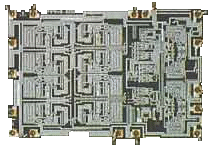
Inside a Microchip
integrated circuit (IC) – a set of electronic components that are etched or imprinted onto a tiny slice of semiconducting material, such as silicon. Sometimes called a microcircuit.
integrated digital audio workstation (DAW) – see hardware digital audio workstation.
integrated loudness (I) – the average loudness as measured for the duration of an audio track or program, in accordance with ITU-R BS.1770. Also called program loudness or programme loudness (British). See also sliding loudness and momentary loudness.
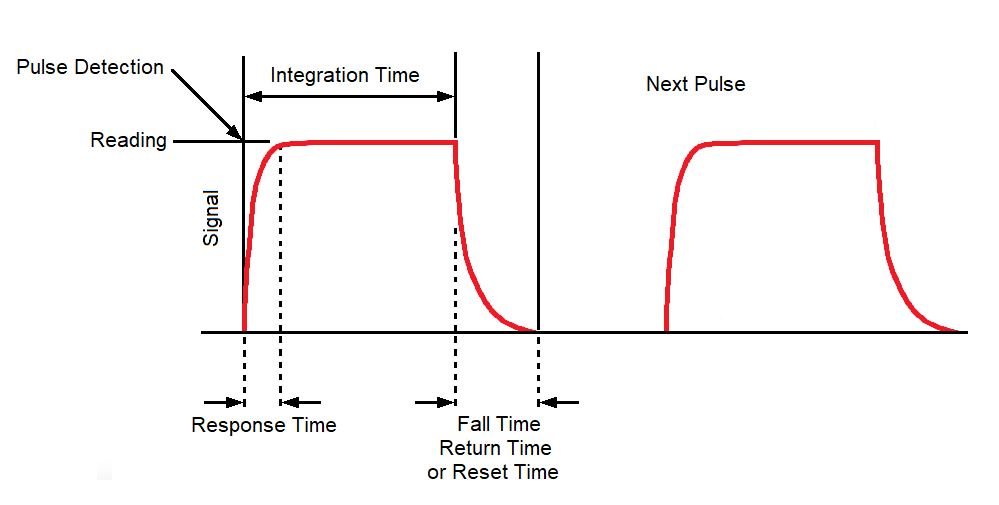
integration time – in signal measurement, the amount of time it takes to reach the point at which there is essentially no change in the level of the signal. See also response time and return time.
Intel Corporation – an American multinational company, headquartered in Santa Clara, California, that manufactures semiconductor microchips.
Intel High-Definiton Audio – see high definition audio, definition #2.
intellectual property (IP) – creations of the mind. Intellectual property includes inventions, literary and artistic works, recordings, symbols, names, images, and other copyrightable works, trademarks, and trade secrets.
intelly – a combination of the words intelligent and telly, meaning a smart TV.
intensity – (1) The strength of an audio signal. See also sound intensity. (2) The brilliance of a video image.
intensity stereo – a stereo image produced only by the difference in level between the left and right channels, as opposed to the difference in arrival time between the channels. Also called intensity stereophony. See also Haas effect, time difference technique, joint stereo, channel coupling, and stereo microphone techniques.
intensity stereophony – see intensity stereo.
Inter App Audio (IAA) – a format for routing audio from one iOS application to another. Although still in use, it has for the most part been replaced by Audiobus (AB) since Apple has approved the use of Audiobus for this purpose.
interaural – literally means “between the ears” and refers to the comparison of sound heard by one ear verses the same sound heard by the other ear. See interaural level difference, interaural time difference, and localization.
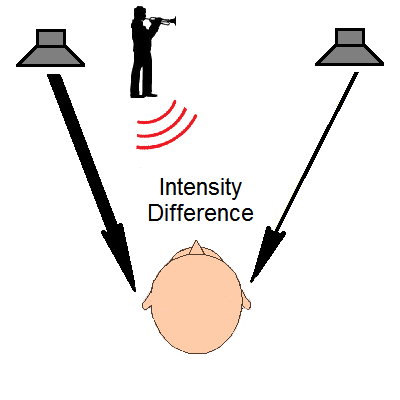
Difference
interaural cross correlation (IACC) – the measure of the difference between the sounds arriving at each ear of a listener facing a performance in a hall. There are several IACC coefficients. IACCA is determined for a frequency range of 100 to 8000 Hz and for a time period of about 1 second using no frequency weighting. IACCE3 is an average of values found for a time period of 80 ms at 500, 1000, and 2000 Hz. IACCL3 is an average of values found for a time period of 750 ms at 500, 1000, and 2000 Hz. The value of the coefficients range from -1 to +1, with -1 meaning the signals are identical, but completely out of phase, +1 meaning they are identical, and 0 meaning they have no correlation at all.
interaural intensity difference (IID) – see interaural level difference.

Difference
interaural level difference (ILD) – the difference in arrival intensities between the two ears due to the head shadow. The human brain uses ILD, ITD (interaural time difference), and IPD (interaural phase difference) for sound localization with a high degree of accuracy. Sometimes called interaural intensity difference (IIT).
interaural phase difference (IPD) – the difference in the phase of a sound wave that reaches each ear, which is dependent on the frequency of the wave and the interaural time difference (ITD). For example, a 1000-Hz tone that reaches the left ear 0.5 ms before the right ear will be 180 degrees out of phase with the wave reaching the right ear. The human brain uses IPD, ITD, and ILD (interaural level difference) for sound localization with a high degree of accuracy.

Difference
interaural time difference (ITD) – the difference in arrival times due to the distance between the ears. The human brain uses ITD, IPD (interaural phase difference), and ILD (interaural level difference) for sound localization with a high degree of accuracy. See also head shadow.
interconnect – (1) To hook up two components. (2) The cable or wire used to hook up two components.
intercut – an editing technique in which a section of recording tape from the master tape is physically cut out and inserted into another take using splicing tape.
interface – (1) A device or system that allows one unit to work, drive, or communicate with another device. (2) To communicate between two devices. (3) Short for audio interface.
interface protocol – a set of rules and/or standards for an interface that allows devices to communicate with one another. The protocol defines the rules of syntax, semantics, synchronization, and sometimes methods for error correction. Protocols may be implemented using hardware, software, or a combination of both. The main types of interfaces encountered in the recording studio are USB, Thunderbolt, and FireWire, although Apple essentially abandoned FireWire in 2008. Sometimes called an interface standard.
| Symbol | Protocol | Max Speed |
|---|---|---|
| USB 1.1 | 12 Mb/s | |
| USB 2.0 | 480 Mb/s | |
| USB 3.0 | 5 Gb/s | |
| USB 3.1 | 10 Gb/s | |
| USB 3.0 PD (Power Delivery) |
5 Gb/s | |
| USB 3.1 PD (Power Delivery) |
10 Gb/s | |
| FireWire 400* | 400 Mb/s | |
| FireWire 800* | 800 Mb/s | |
| FireWire 1600* | 1.6 Gb/s | |
| FireWire 3200* | 3.2 Gb/s | |
| Thunderbolt | 10 Gb/s | |
| Thunderbolt 2 | 20 Gb/s | |
| Thunderbolt 3 | 40 Gb/s | |
| *No longer supported. | ||
interface standard – see interface protocol.
interference – (1) The process in which two or more sound waves of the same frequency combine to reinforce or cancel each other, with the resulting amplitude being equal to the sum of the amplitudes of the combining waves. Sometimes called acoustic interference. (2) Hum, static, buzzes, and other noises in audio equipment caused by the equipment or cables picking up stray electromagnetic fields. See electromagnetic interference (EMI). (3) A process that competes with another in an adverse way, such as noise interfering with a sound signal. (4) Anything that disrupts a radio signal as it travels from a transmitter to a receiver, such as someone using the same or a nearby frequency, as well as interference from sources like those listed in definition #2 above.
interference microphone – see shotgun microphone.
interference tube – see shotgun microphone.
interference tube microphone – see shotgun microphone.
interference tube principle – the basis for the design of a shotgun microphone that uses an interference tube, a long, hollow, slotted tube that allows desirable on-axis sound to pass umimpeded straight down the the tube to the diaphragm, but undesired off-axis sounds enter through the various side slots, where they arrive at the diaphragm with varying amounts of phase shift partially canceling out one another, creating interference.
interference resistance – a thin film of oxidation that forms on the cathode of a vacuum tube, especially when operated for long periods with no anode current. This coating increases the resistance, increases noise, and reduces the amount of gain of the tube. The condition is irreversible.
interlaced video – a technique for doubling the perceived frame rate of a video display without consuming extra bandwidth. The interlaced signal contains two fields of a video frame captured at two different times, with one field being used for all odd-numbered lines on the screen and a second field being displayed on the even-numbered lines. This enhances motion perception to the viewer, and reduces flicker.
interlayer transfer – see print through.
interleaved audio – an audio file in which the left and right stereo channels or several channels of surround sound are combined to form a single file, as opposed to split-channel audio files in which all channels are in separate files. See also interleaved stereo.
interleaved stereo – a stereo audio file in which the left and right channels are combined to form a single file, as opposed to split stereo files in which the left and right channels are in separate files. See also interleaved audio.
interleaving – a technique to make a system more efficient, faster, and more reliable by arranging data in a file or storage device in a noncontiguous manner.
intermediate definition – a term used to designate a resolution between “standard” resolution and high-definition.
intermediate frequency (IF) – the frequency to which a wireless receiver converts the incoming RF signal and at which amplification and filtering take place before demodulation. This occurs in the mixer stage.
intermodulation (IM) – frequencies produced by the combinations (sums and differences) of other frequencies that creates new unwanted frequencies, usually in the gain stage prior to the mixer stage of a receiver or in any non-linear device. Note: Although frequently used interchangeably, intermodulation distortion usually refers to audio signals, while intermodulation often refers to radio signals.
intermodulation distortion (IMD) – distortion caused by the sum and difference of the frequencies of two or more audio signals that creates new unwanted frequencies that are not harmonics of any of the original signals. There is no standard method of expressing intermodulation distortion and, therefore, is seldom expressed by manufacturers. Note: Although frequently used interchangeably, intermodulation distortion usually refers to audio signals, while intermodulation often refers to radio signals.
internal microphone – a microphone mounted inside an instrument. Often an electret condenser microphone is used.
internal noise – see self noise.
International Association for Broadcast & Media Technology Suppliers (IABM) – a non-profit trade organization, formerly known as International Association of Broadcasting Manufacturers. IABM facilitates networking and interaction between suppliers and the broadcast and media technology industry.
International Business Machines Corporation (IBM) – a multinational technology, computer, and consulting company headquartered in Armonk, New York. IBM manufactures and markets computer hardware and software and provides consulting services in computers and other technologies. It was founded in 1911 as the Computing Tabulating Recording Company (CTR). It later merged with three other companies, Tabulating Machine Company, the International Time Recording Company, and the Computing Scale Company. It took the name International Business Machines in 1924, a name it already used in several other countries.
International MIDI Association (IMA) – the organization that developed MIDI, and became the MMA in 1985.
international pitch – See A440.
international power connector – see IEC connector.
International Recording Media Association (IRMA) – see Media & Entertainment Services Alliance.
International Songwriting Competition (ISC) – an annual song contest open to amateur and professional songwriters in a large variety of genres from all over the world. The winners are awarded cash and prizes and the opportunity for songwriters, musicians, and performers to further their music careers, and gain recognition and exposure in the music industry.
International Standard Musical Work Code (ISWC) – a unique and permanent identifier for musical works issued in accordance with international standard ISO 15707. ISWC codes are issued in the form T-123.456.789-Z, where the separators are for ease of reading and are not required, but no other separators are allowed. The codes are issued in numerical sequence and contain no information about the author, title, country of origin, or publisher. The first ISWC was T-000.000.001-0 issued in 1995 for the song “Dancing Queen” by ABBA.
International Standard Name Identifier (ISNI) – an ISO specification for assigning a 16-digit identification number used to uniquely identify the names of performers, producers, engineers, and other creative participants in audio recordings and other media content that can be used in metadata without releasing any personal information.
international standard pitch – See A440.
International Steering Committee(ISC) – a committee set up by the RIAA, RIAJ, the IFPI to set standards for new audio recording formats.
International Tape Association (ITA) – see Media & Entertainment Services Alliance.
international version – see M&E.
internet – a global computer network that provides for the connection and exchange of data with computers worldwide. Commercial, educational, governmental, and other networks can all be connected using the same communications protocols. Sometimes spelled Internet.
internet protocol (IP) – the set of rules defining the format of data and how it is sent over the internet or other networks. Among other things, it uses IP addresses placed in headers to route data to the correct destination.
internet radio – broadcasting audio over the internet. Internet radio is sent to listeners as a continuous stream of audio that usually cannot be paused or replayed, in a similar fashion to that of traditional radio broadcasting (terrestrial radio). In this respect, it differs from on-demand file serving and podcasting, which involve downloading rather than streaming. Also called web radio, net radio, streaming radio, e-radio, online radio, or webcasting.
internet service provider (ISP) – a business that provides access to the internet and other related services.
internet television – the distribution of television content over the internet, as opposed to over-the-air television, cable television, or satellite television. Sometimes called online television.
Interoperable Master Format (IMF) – an international standard developed by SMPTE and DPP for the file-based interchange of multi-version, finished audio-visual works, and supports multi-language, multi-reel, subtitles/closed captions, video inserts, and after-the-fact delivery of content with supplemental packages. IMF uses a core framework that includes essence containers, audio and timed text essence formats, basic descriptive metadata, complex playlists, delivery, etc., that is supplemented by incremental applications specific to particular domains. A typical application will specify video codecs and image characteristics, and can specify additional descriptive metadata. By sharing the core framework across applications, IMF is designed adapt to evolving industry requirements while maintaining much of its commonality across implementations and practices.
interrupted foldback (IFB) – an audio system that provides on-air personalities (talent) with the regular program audio plus verbal cues from the director and his or her assistants through headphones or in-ear monitors. Also called talent cueing.
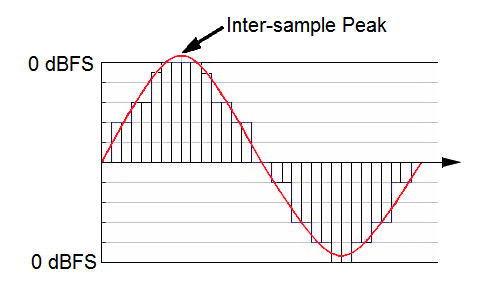
inter-sample meter (ISM) – a hardware or software meter that that measures analog levels during digital-to-analog conversion in order to detect inter-sample peaks. Also called a inter-sample peak meter.
inter-sample peak (ISP) – a peak that occurs during digital-to-analog conversion in which the analog signal momentarily exceeds the level of the digital signal from which it was converted. This phenomenon can result in audible clipping and distortion. Sometimes spelled intersample peak.
inter-sample peak meter – see inter-sample meter.
intersymbol interference (ISI) – distortion in audio signals or video signals caused by the smearing or overlapping of timing pulses (symbols). Also called phase jitter or timing distortion. See also digital jitter.
interval – the difference in pitch between two tones or musical notes. For example, the interval between two adjacent keys on a piano is a semitone. The interval between strings on a guitar is normally a fourth. Other intervals are shown in the table below. A melodic interval is the interval between two notes that are played one after the other, while a harmonic interval is the interval between two notes that are played simultaneously. See also interval number and cent.
| No. of Semitones |
Interval Name |
Quality | Augmented/ Diminished |
Consonance |
|---|---|---|---|---|
| 0 | Unison | Perfect Unison | Consonant | |
| 1 | Minor Second | Augmented Unison | Dissonant | |
| 2 | Major Second | Diminished Third | Dissonant | |
| 3 | Minor Third | Augmented Second | Dissonant | |
| 4 | Major Third | Diminished Fourth | Consonant | |
| 5 | Perfect Fourth | Perfect Fourth | Augmented Third | Dissonant |
| 6 | Augmented Fourth | Augmented Fourth | Dissonant | 6 | Diminished Fifth | Diminished Fifth | Consonant |
| 7 | Perfect Fifth | Perfect Fifth | Diminished Sixth | Dissonant |
| 8 | Minor Sixth | Augmented Fifth | Dissonant | |
| 9 | Major Sixth | Diminished Seventh | Consonant | |
| 10 | Minor Seventh | Augmented Sixth | Dissonant | |
| 11 | Major Seventh | Dimished Octave | Dissonant | |
| 12 | Octave | Perfect Octave | Augmented Seventh | Consonant |
interval number – the number of staff positions on a music staff that an interval includes, counting both lines and spaces, and including the positions of both notes forming the interval. For example, the interval C to E is a third because the notes from C to E occupy three consecutive staff positions, including the positions of C and E.
interval ratio – see frequency ratio.
in-the-box (ITB) – a slang term that refers to audio production in which all mixing and effects processing takes place entirely within a computer-based DAW, as opposed to out-of-the-box (OTB) in which external hardware processors are used.
in-the-mud – a slang term for a signal level that is too low and is barely registering on the level meters.
in the pocket – slang used to describe a manner of playing music with a solid “groove” or “swing” having a great “feel.” It is used to describe drummers, bass players, and other musicians playing rhythm parts. It does not necessarily mean playing exactly on the beat, but rather playing with a consistent pattern that may be slightly ahead or behind the beat. For example, the kick drum may be struck on the beat and the snare slightly behind the beat. To be in the pocket, the bass player would have to be playing a similarly consistent pattern or groove.
in-the-red – a slang term for a signal level that is too high, going above 0 VU or 0 dBFS, and likely producing distortion.
intonation – (1) The extent to which the notes of a piece of music are played or sung in tune. (2) The type of temperament used for a musical scale, such as Pythagorean tuning, just intonation, mean-tone temperament, harmonic series tuning, and equal temperament.
intonation correction – see pitch correction.
intraaural – literally means “in the ear” and refers to headphones or earbuds that fit inside the ear. See also supraaural and circumaural.
intranet – a closed (not accessible by the public) computer network that uses internet protocols, usually located at a single site, such as a business location. It is basically, a private internet.
intrinsic noise – the noise that is inherent in the device or system itself, as opposed to noise induced by an external source. See self noise.
intro – the beginning of a song, which is sometimes unrelated to the remainder of the piece in either key or tempo. Short for introduction. The opposite of outro.
in tune – being tuned to the same reference pitch, or all instruments in a group being tuned alike. Opposite of out of tune.
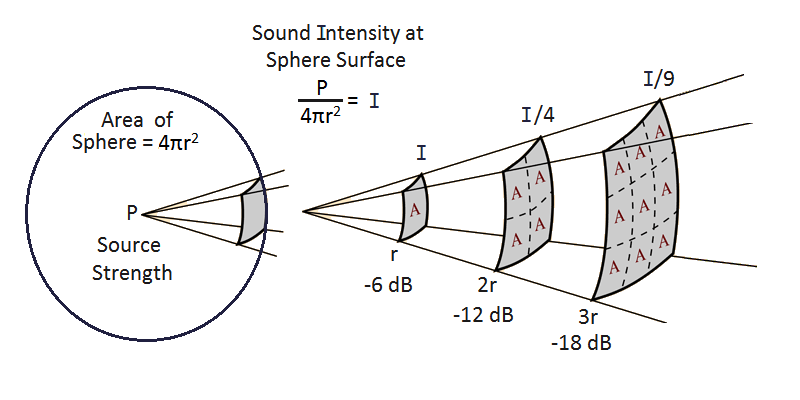
inverse square law – in an open area the amplitude of a point source sound wave will decrease at a rate inversely proportional to the square of the distance from its source. Stated another way. every time the distance from the sound source is doubled, the sound pressure level (SPL) is reduced by 6 dB. In practice, sound rarely behaves in this theoretical manner as sounds are not usually in open spaces and do not emanate from a point source.
inverted polarity – see polarity inversion.
I/O – abbreviation for Input/Output.
Ionian mode – one of the seven musical modes or scales with the interval pattern of tone-tone-semitone-tone-tone-tone-semitone. This mode is also known as the major scale.
iOS – a mobile operating system created and developed by Apple, Inc. for use on many of the company's mobile devices, such as the iPhone, the iPod, and iPad. The iPad version was renamed iPadOS in 2019. Originally known as iPhone OS.
IP – (1) Internet Protocol. (2) Intellectual Property
IPD – Interaural Phase Difference.
IPI number – Interested Party Information number. A nine-digit international identification number assigned to songwriters and publishers by performing rights organizations (PROs) to uniquely identify them as rights holders. Previously known as a CAE number.
iPod™ – a portable digital media player containing a hard drive made by Apple Computer that can store and play music and video files. The original iPod was about the size of a deck of playing cards, with a monochrome screen, and a 5-gigabyte capacity. iPods can be now be purchased in a variety of sizes with color screens, and up to 120 GB of storage capacity, capable of playing movies, videos, and TV shows.
ips – the normal abbreviation for inches per second, although current formatting practices dictate that it should be in/s. See also tape speed.
IR – Impulse Response.
IRCAM – Institute de Recherche et de Coordination Acoustique/Musique (Institute for Research and Coordination in Acoustics/Music). An organization headquartered in Paris that provides facilities for research into music and acoustics as well as composition, performance, and music technology.
Irish whistle – see penny whistle.
IRMA – International Recording Media Association. See Media & Entertainment Services Alliance.
iron oxide – see ferric oxide.
IRR – Image Rejection Ratio.
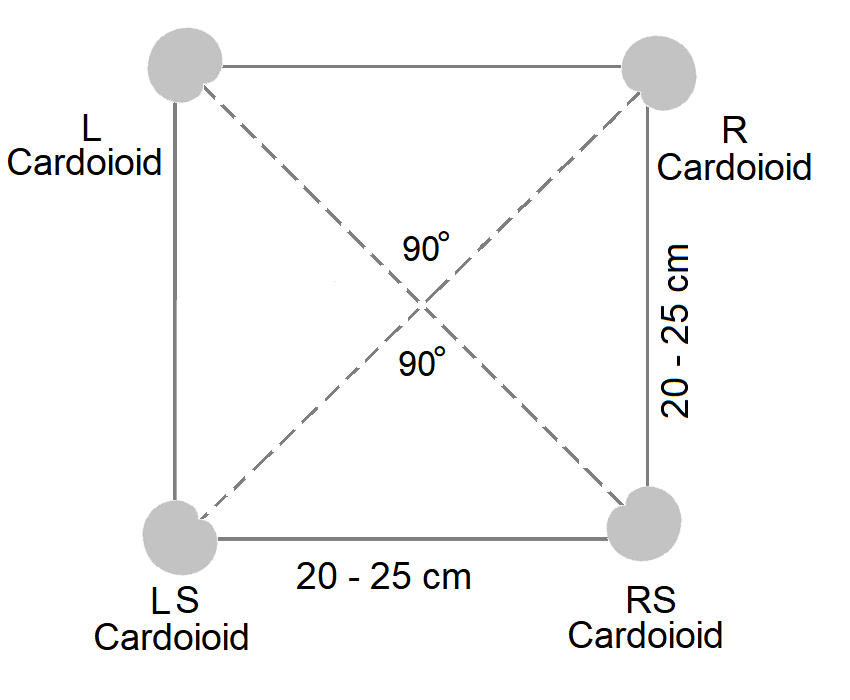
IRT cross – a surround sound microphone technique used for the pickup of ambience, developed by the German-based IRT (Institut für Rundfunktechnik — Institute of Radio Technology). It consists of four cardioid microphones placed in a square formation, angled at 90 degrees from one another, 45 degrees off axis from the sound source, and 20 to 25 cm (8 to 10 in) apart. The outputs from these mics are routed to left, right, left surround, and right surround at an appropriate level compared to the front mic array. The main disadvantage of this approach is that it has a significant amount of direct sound. This technique resembles back-to-back near-coincident stereo pairs. Although some people have called it a double ORTF, it does not use the ORTF angle of 110 degrees and it is slightly larger.
ISB – Independent SideBand. A single-sideband mode of AM transmission used by some AM radio transmitters. While each sideband usually carries identical information, ISB modulates two different input signals with one on the upper sideband and another other on the lower sideband. This technology (also called the Kahn system) is sometimes used to broadcast AM stereo. Other uses are prohibited in the US by the FCC.
ISC – International Steering Committee or International Songwriting Competition.
ISDB-T – Integrated Services Digital Broadcasting - Terrestrial. See DTV.
ISM – (1) Industrial, Scientific, and Medical. See 2.4 GHz band. (2) Inter-Sample Meter.
ISNI – International Standard Naming Identifier.
ISO – International Standards Organization. An international standards organization, founded in 1947 and headquartered in Geneva, Switzerland, that sets standards for a variety of disciplines. It is composed of representatives from 196 national standards organizations.
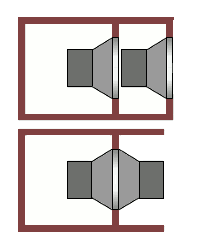
isobaric curves – see equal level curves.
isobaric loudspeaker – a type of speaker design for subwoofers and bass drivers that uses a small, sealed enclosure with woofers (bass drivers) placed face-to-face and wired out of phase or one behind the other in phase. This design was developed by Harry F. Olson in the early 1950s, to improve low-end frequency response without increasing cabinet size, although at an increase in cost and weight.
iso booth – short for isolation booth.
iso box – short for isolation box.
iso cab – short for isolation cabinet.
isochronous – a signal transmitted at a constant rate or that contains timing information embedded within the signal. Audio and video are isochronous signals, while data transfer usually is not.
isolation – (1) The freedom from leakage. (2) The ability to reject unwanted sounds. (3) Soundproofing that minimizes the transfer or propagation of sound from one area to another. See also acoustic treatment, gobo, and room-within-a-room. (4) Mechanical decoupling. (5) Preventing electric current from flowing between devices. See galvanic isolation.
isolation booth – a space, usually a small room, treated in such a manner as to reduce reverberation in a vocal recording or to provide separation in order to minimize leakage between the vocalist and other instruments. Sometimes called an iso booth for short. See also vocal booth.
isolation box – (1) A cabinet designed to reduce the noise coming from computers, hard drives, or other noisy devices. See also isolation cabinet. (2) A device containing an isolation transformer used (a) to provide electrical isolation between the source and destination and/or (b) to convert unbalanced signals into balanced signals and vice versa. Sometimes called a balun, isolating box, balanced/unbalanced converter, balanced/unbalanced transformer, balanced-to-unbalanced converter, balanced-to-unbalanced transformer, or “hum killer”.
isolation cabinet – a sealed enclosure into which a guitar speaker is placed, usually along with a microphone with its signal routed to a mixer, console, or DAW, designed to reduce the sound level and reduce bleeding. Called an iso cab for short. See also isolation box.
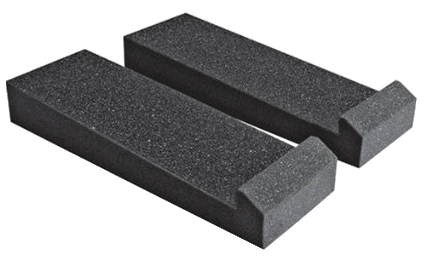
isolation pad – a mat made of foam, rubber, or other sound absorbent material that is placed between the speaker and a table, desk, or stand upon which it rests to prevent vibrations from passing through. See mechanical decoupling.
isolation shield – see reflection shield.
isolation transformer – a transformer used to provide electric power from an alternating current (ac) power source to a device while isolating the device from the power source, usually to provide safety (protection from electric shock), to suppress electrical noise, or to isolate two circuits that should not be connected. Isolation transformers usually output the same voltage as the input, and sometimes have increased insulation between primary and secondary windings to provide additional isolation.
isolator – (1) A device that provides mechanical decoupling to reduce the transmission of physical vibrations between objects, such as an isolation pad. Also called a decoupler. (2) A mechanical switching device that, when open, provides galvanic isolation between a source and a destination in order to eliminate ground loops.
isophones – equal-loudness curves that describe what sound pressure level is required at a given frequency for a person to perceive it as equally loud to that of another frequency. Also called phon lines. See also Fletcher-Munson effect and Robinson-Dadson curves.
isotropic – identical in every direction, not varying with respect to direction.
isotropy – the condition of being identical in every direction or having properties that do not vary with respect to direction. The opposite of anisotropy.
isotropic antenna – a theoretical antenna that radiates electromagnetic waves with equal intensity in all directions.
ISP – (1) Internet Service Provider. (2) Inter-Sample Peak.
ISRC – International Standard Recording Code. A code that is embedded in a sound recording that allows tracking of plays by streaming services.
ISRC Manager – an organization or studio that has an agreement with the ISRC agency that allows them to assign ISRC codes to recordings that they do not own on behalf their clients.
ISWC – International Standard Musical Work Code.
IT – Information Technology.
ITA – International Tape Association. See Media & Entertainment Services Alliance.
ITAA – Information Technology Association of America. See TechAmerica.
ITB – see in-the-box.
ITD – Interaural Time Difference or Initial Time Delay.
iterative quantization – a version of quantization available in some DAWs and plug-ins that adjusts rhythms toward the beat by a specified percentage rather than exactly on the beat. This procedure tightens up the music without making it sound robotic. British spelling iterative quantisation.
ITT Corporation – a global diversified manufacturing company based in the United States involved in a number of industries including electronics, flow control, security, and military defense. The company was founded in 1920 as the International Telephone & Telegraph (IT&T). It became ITT Corporation in 2006 when IT&T spun it off.
ITT Cannon – see ITT Interconnect Solutions.
ITT Interconnect Solutions – a company formerly known as ITT Cannon that is headquartered in Santa Ana, California, and designs and manufactures connectors and connector assemblies. Now a division of ITT Corporation, it was founded in 1915 as the Cannon Company by James H. Cannon. Cannon was instrumental in developing some of the first equipment for sound films in the early years of the movie industry. In the 1930s, Cannon developed connectors for the aircraft industries. The D-subminiature connector was developed for military and aerospace applications in the 1950s. Also in the 1950s, Cannon developed a connector for use in military communications equipment called the XLR, that went on to be used in professional recording studios. The XLR is sometimes called a “Cannon connector.” In 2007, ITT Cannon changed its name to ITT Interconnect Solutions.
ITU – International Telecommunications Union. An international organization headquartered in Geneva, Switzerland, that coordinates global telecommunication networks and services. It was founded as the International Telegraph Union in 1865, but merged with CCIR and other organizations in 1932 to become the International Telecommunication Union. The ITU is divided into three sectors: radiocommunications (ITU-R), telecommunications development (ITU-D), and telecommunications standards (ITU-T).
iTunes – an application developed by Apple, Inc.. It is used to download, play, and organize digital media on computers, tablets, and smart phones. It can be used as a media player, media library, media management tool, and internet broadcaster. iTunes allows users to purchase and download music, music videos, television shows, audiobooks, podcasts, movies, and other digital content.
ITU-R BS.468 – see CCIR curve.
ITU-R BS.775 – a recommendation of the International Telecommunications Union (ITU) for speaker placement for a multi-channel surround standard for a 5.1 configuration, sometimes called a 3/2 format referring to three front speakers and two surround speakers. It recommends the front speakers be placed on the arc of a circle. When the front speakers must be placed on a straight line, such as when the center speaker cannot be placed behind the screen, it recommends that the sound be delayed so that all sound reaches the listener at the same time. For the rear surround speakers, a compromise of 110 degrees is recommended. While 90 degrees (directly on either side of the listener) produces the best ambience or envelopment, 135 degrees produces the best localization in the rear, and hence the compromise. Often shown as simply ITU-775.
ITU-R BS.1770 – a standard established by the International Telecommunications Union (ITU) to control loudness in the broadcast industry. It specifies the use of K-weighting for metering loudness and the simultaneous use of peak metering.
Note: We believe this is the largest dictionary (glossary) of terms specific to usage within the recording industry that is currently available on the internet, with more than 8,800 entries, nearly 800 illustrations, and dozens of tables. Some of the terms have different or additional meanings in other situations, especially within the electronic, automotive, scientific, and computer industries. Of necessity there are obvious overlaps into other fields such as music, electronics, and computers, but such excursions are limited to information deemed pertinent to the knowledge required to operate and/or participate effectively in the workings of a recording studio. Also included are terms related to sound reinforcement (live performances) including wireless microphone technology because a working knowledge of that terminology is necessary for recording at live performance venues. Because recording studios also record audio for video and motion pictures (films), some terminology from those fields is included. Some scientific terms are included because they help explain studio terminology. For example, electromagnetism explains how microphones, loudspeakers, and guitar pickups work. Knowledge of radio waves and the radio frequency spectrum is needed to explain wireless devices. Any trademarks or trade names mentioned belong to their respective owners. The information contained in this dictionary is believed to be accurate at the time of publication. This information is subject to change without notice. The information was obtained from and cross-checked with a variety of sources that are believed to be reliable. However, Los Senderos Studio, LLC does not guarantee the accuracy or completeness of the information contained herein. Please contact us to report any errors, omissions, discrepancies, or broken links. Los Senderos Studio shall not be responsible for any consequences or damages arising out of the use of this information. Nothing in this glossary should be interpreted as legal advice. For a glossary providing information on legal and business matters for musicians, we suggest you consult Musicians Business Dictionary.
A note on alphabetical order: The terms in this glossary are alphabetical without regard to spaces and punctuation. For example, AM Radio follows amplitude. While this may seem to be at odds with other conventions, it eliminates confusion with words such as pickup, which is sometimes written as pick up or pick-up. In addition, all symbols such as &, -, or / are ignored. The entries on the number page (0-9) are listed in increasing value within each digit. For example, all of the entries beginning with 1 are listed before those starting with 2. For Greek letters (α-ω), the entries are in Greek alphabetical order.


